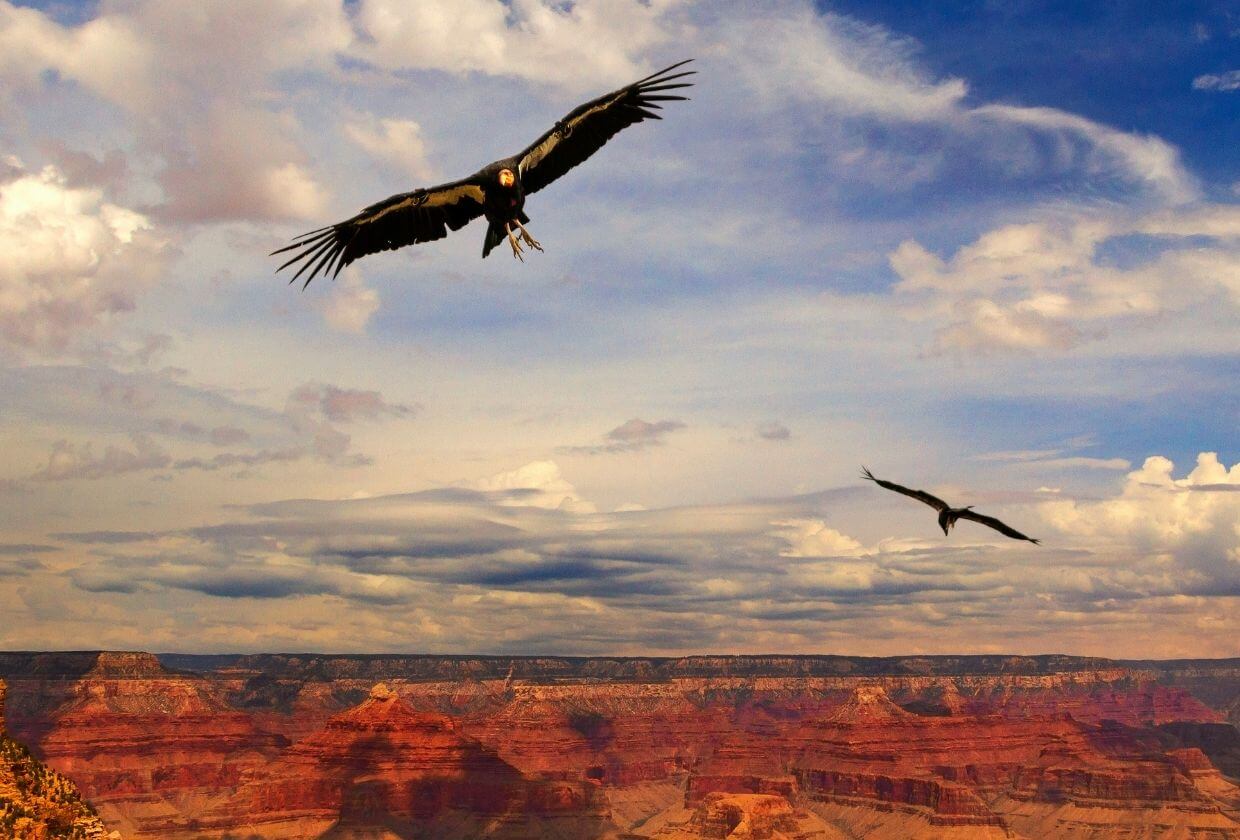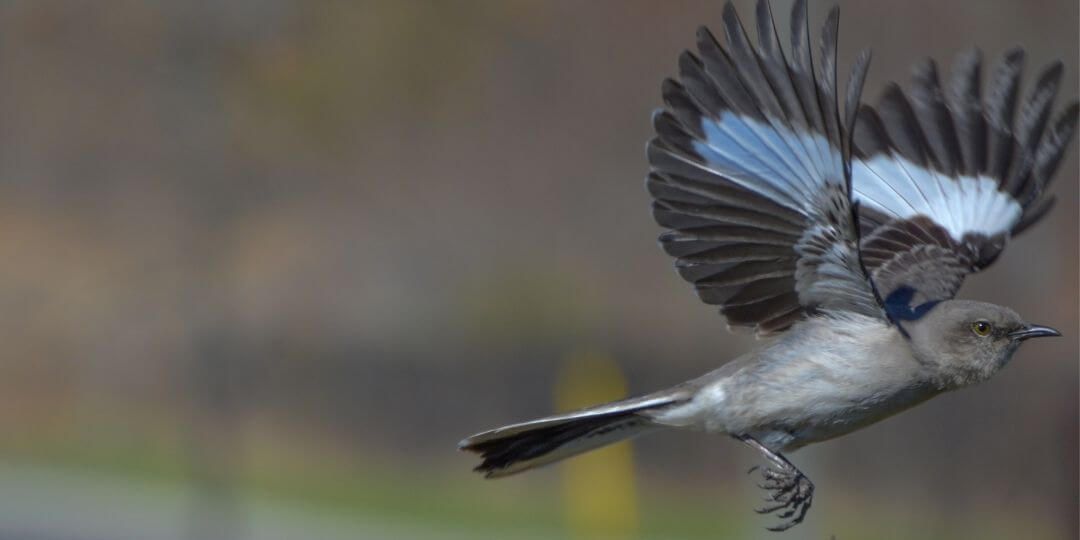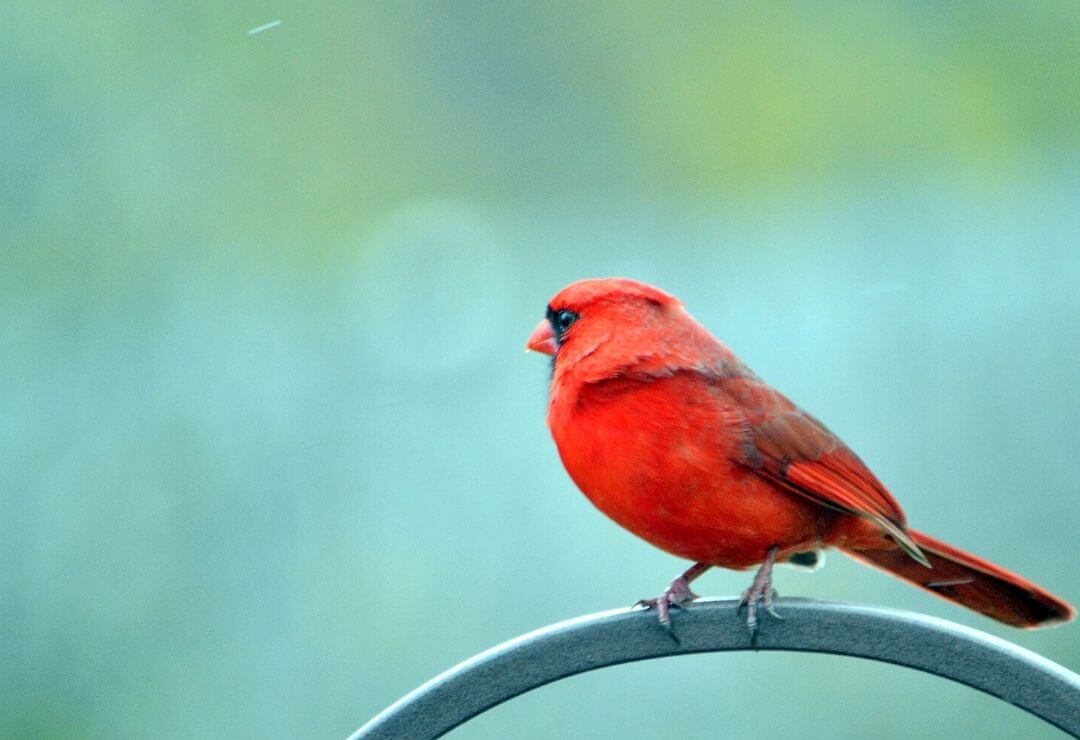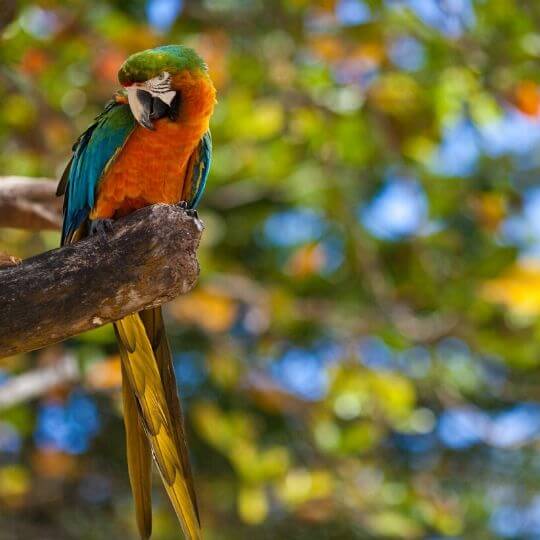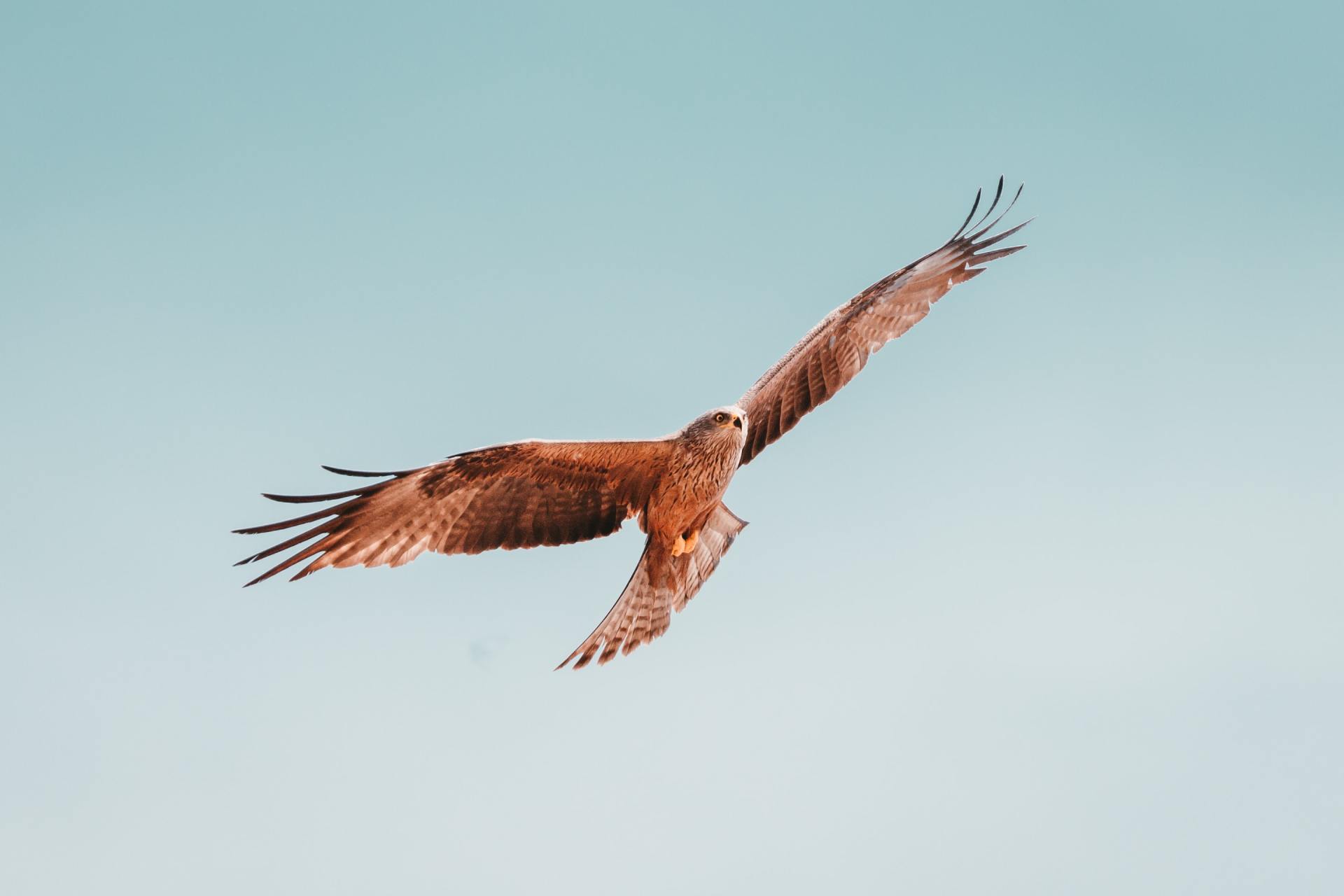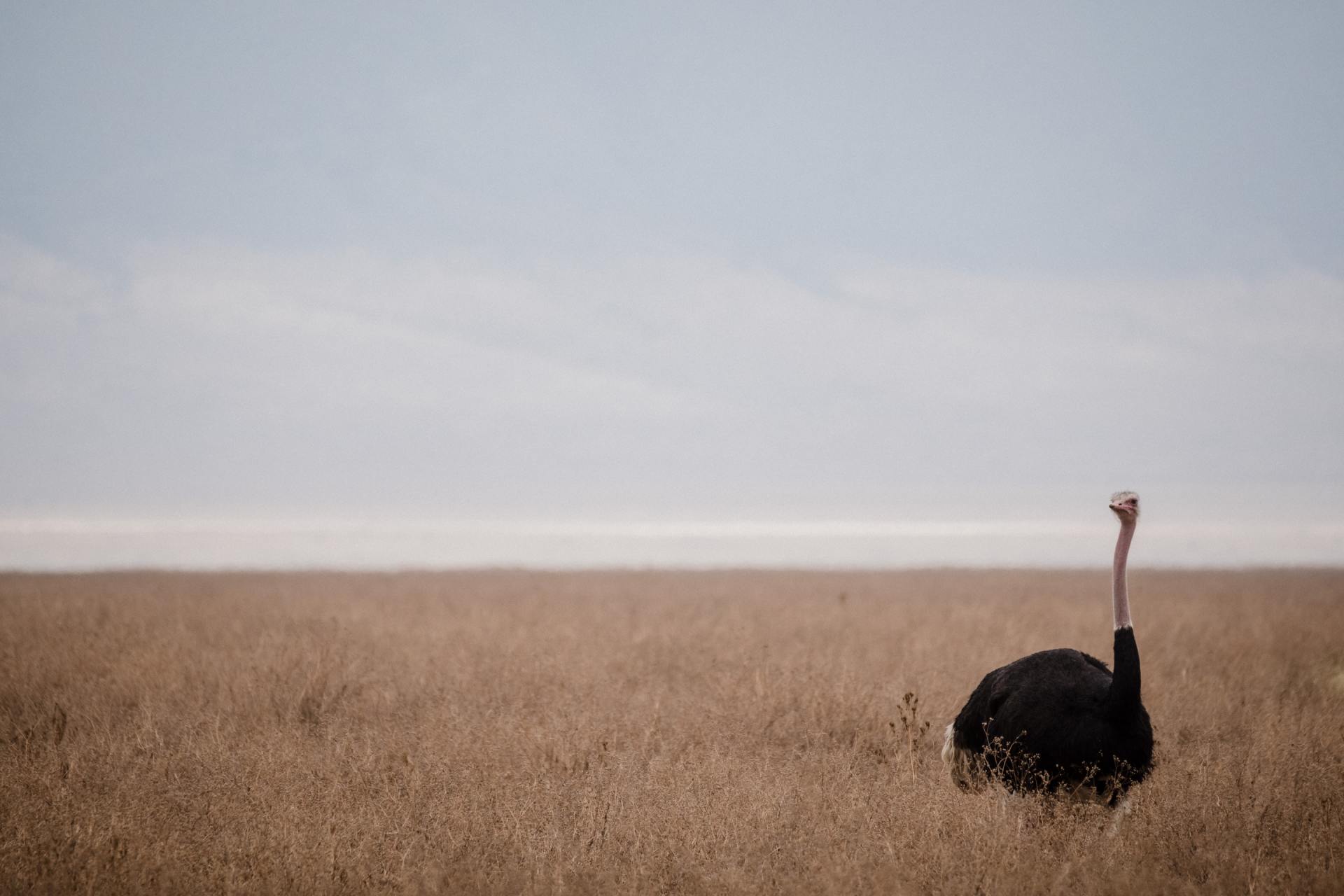Birds

What Makes a Bird a Bird?
Ostriches
Hornbills
Word of the Week
Fledgling
A fledgling is a baby bird that has left the nest but cannot fly yet. Fledglings have not developed the feathers or muscles that they need to fly.
When in the fledgling phase, most birds will still be cared for by their parents and move around by hopping.
Species Spotlight
Emperor Penguin
Aptenodytes forsteri
As the largest species of penguin in the world, emperor penguins are known as the kings and queens of Antarctica. They can weigh up to 51-lbs and reach 4-ft tall with beaks nearly 3-in long. Emperor penguins eat fish and use their strong swimming abilities to catch more than 5-lbs of fish each day. They can hold their breath for up to 15-minutes and dive more than 1,500-ft chasing after fish! Their thick, waterproof feathers help to keep them warm and dry even after swimming in the freezing water. Emperor penguins spend most of their lives in large colonies. They hunt in groups and huddle together during the winter months when freezing winds whip across the Antarctic landscape.
Emperor penguins are great parents! They usually breed during the winter and lay one egg in the spring or early summer. Both the male and female take turns keeping the egg warm on their feet until the chick hatches. The chick is cared for by both parents until they develop their waterproof feathers and can hunt on their own!
BRAIN BLAST
Catching 15-lbs of fish every day is not an easy task! Luckily, penguins have many adaptations that make them successful hunters. Using the information above and the "Keep Learning" link, identify at least 4 adaptations that emperor penguins use when hunting fish and their purpose.
Conservation Corner
Saving the California Condor
It wasn't that long ago that the largest bird in North America was almost extinct. The California condor's population was down to just 22 birds in the 1980s as a result of lead poisoning and other threats. Like other vultures, California condors eat dead animals, including any leftovers from hunters. These leftovers were often filled with lead bullet fragments that would poison the condors, causing them to become very sick.
Scientists took action by catching all of the remaining condors and placing them at the San Diego Zoo and the Los Angeles Zoo. At the zoos, the condors were safe from threats and could raise healthy chicks! Over the next several years, the California condor's population grew and condors were slowly reintroduced back into the wild. With new condor protections in place, such as lead-free hunting zones, ways to encourage hunters to remove their leftovers, and education programs, the wild California condor population has grown to roughly 300 birds with even more in zoos! Thanks to hard work from conservationists and biologists, the California condor was saved from extinction and continues to amaze those lucky enough to catch a glimpse of them in California, Arizona, and Mexico.
You Are What You Eat
You can tell a lot about what a bird eats by its beak! For each bird in this activity, pay special attention to the shape and size of its beak and make an educated guess about what you think it may eat.
Find Your Feather
Click on the tiles below to reveal the photos below. Match each feather to the correct bird!
Bird Challenge
Birds are incredible animals because, no matter where you are in the world, there are most likely birds around! For this challenge, you are going to practice your birdwatching skills and learn what birds live in your neighborhood.
Beginner
Using the chart attached below, document the birds you see in your neighborhood and some of their traits.
Expert
Using the chart below, document the birds that live in your neighborhood. Note the important characteristics and then identify the species of bird using a local field guide.
Our Favorite Bird Videos
Glossary
Adaptation
The process by which a species becomes more fit for its environment over the course of several generations. It is a result of natural selection.
Aquatic
Living in water.
Beak
The extended jaw of a bird (also known as a bill).
Bird
A group of endothermic (warm-blooded) vertebrates that have wings and feathers and also lay eggs!
Camouflage
The ability for an organism to blend into their surroundings usually to hide from prey or predators.
Carnivore
An animal that eats other animals.
Casque
A structure attached to the top of some bird species' bills (hornbills).
Ectotherm
An animal that relies on the outside temperature to regulate their body temperature (reptiles and amphibians). Also known as cold-blooded.
Endotherm
An animal that regulates their body temperature internally (mammals and birds). Also known as warm-blooded.
Herbivore
An animal that eats mostly plants.
Invertebrate
An animal that has no bones.
Keratin
A structural protein that makes up hair, nails, feathers, horns, and claws.
Omnivore
An animal that eats both plants and animals.
Palm Oil
Oil produced from the fruit of the African oil palm tree generally in Southeast Asia and Africa that is used in a wide variety of everyday products.
Predator
An animal that hunts other animals for food.
Prey
An animal that is hunted and eaten by another animal.
Species
A closely related group of animals with similar characteristics that are capable of reproducing (example: tigers).
Subspecies
A group of animals within a species that are genetically different from other groups in the same species (there are 6 subspecies of tigers).
Terrestrial
Living on Earth (on the ground).
Theory
An explanation of a natural phenomenon that is supported by facts and hypotheses.
Vertebrate
An animal that has a backbone.
Sign Up for our Newsletter
Stay up to date with new adventures, live classes, deals, and more!

Helpful Resources
*Please note we do not offer refunds for EdZOOcating Adventures memberships. We recommend you explore the 3-day free trial prior to subscribing!*

